- Home
- Robert Silverberg
The Planet Killers
The Planet Killers Read online
EARLY BIRD BOOKS
FRESH EBOOK DEALS, DELIVERED DAILY
LOVE TO READ ?
LOVE GREAT SALES ?
GET FANTASTIC DEALS ON BESTSELLING EBOOKS
DELIVERED TO YOUR INBOX EVERY DAY!
The Galaxy’s Greatest Newsletter
Delivered to Your Inbox
Get awesome tales of fantasy and science fiction once a week.
Visit us at www.theportalist.com
PRAISE FOR THE WRITING OF ROBERT SILVERBERG
“Where Silverberg goes today, Science Fiction will follow tomorrow.”
—Isaac Asimov, author of Foundation
“[He] seems capable of amazements beyond those of mere mortals.”
—The Washington Post Book World
“A master of his craft and imagination.”
—The Los Angeles Times
“One of the great storytellers of the century.”
—Roger Zelazny, author of the Chronicles of Amber series
“Silverberg is a master writer in any genre.”
—John Shirley, author of Demons
“Robert Silverberg’s versatile, skeptical intelligence controls a lavish and splendid imagination.”
—Ursula K. Le Guin, author of The Left-Hand of Darkness
“Robert Silverberg is a master storyteller.”
—SF Signal
“A major force in science fiction.”
—The New York Times Book Review
The Planet Killers
Three Novels of the Spaceways
Robert Silverberg
Contents
INTRODUCTION
THE PLOT AGAINST EARTH
When the Interworld Crime Commission calls upon the Terran World Government to help them put a stop to the illegal trafficking of mind-shattering hypnojewels, Special Investigator Lloyd Cotton finds that being the target of assassination may be the least of his worries .
THE PLANET KILLERS
The Terran Security Service’s infallible computer has calculated that in just sixty-seven years, the planet Lurion will destroy Earth—but not if Terran Agent Roy Gardner and his team can annihilate their future enemy’s world first
ONE OF OUR ASTEROIDS IS MISSING
John Storm just wanted to stake his claim on the mineral-rich asteroid that was rightfully his and then retire back on Earth with his beautiful wife. But the powers that be have a different plan for the asteroid, and they aren’t afraid to make a troublesome entrepreneur disappear to steal its secrets .
A Biography of Robert Silverberg
Introduction
I was a college sophomore in the fall of 1953, hoping in a rather desperate way to become a professional science-fiction writer some day, when the first Ace Double Book appeared. In those days it was possible to buy all the science fiction that was published, even on a college sophomore’s budget, because there really wasn’t very much of it—four or five magazines a month, and one or two paperbacks at most—and so I snapped it up.
It was an unusual-looking book. For 35 cents—five or six dollars in today’s purchasing power—you got a short, thick paperback containing A. E. van Vogt’s novel The World of Null-A . But if you turned the book over, flipping it from top to bottom in the process, you discovered a second van Vogt novel on the back— The Universe Maker . Two for the price of one—182 pages of small type for Null-A , and 138 more for Universe Maker ! And, though the greatly ballyhooed World of Null-A was plainly the main event here, one could not actually consider one book to be the lead novel and the other its backup, because each was printed upside down in relation to the other, so that the volume had neither “front” nor “back,” just two novels in one binding, each with its own cover and each inverted vis-a-vis its companion.
As I examined it I don’t think I allowed myself the fantasy of having some book of mine published in the Ace Double series just yet. It would have been much too far-fetched. I still hadn’t managed to sell even one short story, though just a couple of months earlier I had had an article on science-fiction fandom accepted by one of the professional s-f magazines. That sale had brought me $30, but to me an article was a somewhat lesser thing than a story, and I would not think of myself as a real science-fiction writer until I had sold a story or two. Selling novels, perhaps, would come later, but I tried to keep my adolescent fantasies as plausible as I could.
So I bought the van Vogt Ace Double Book more as an avid collector of science fiction than as a potential author of Ace Doubles. Indeed there was no other reason then for me to have bought the book, for I had read World of Null-A three or four years before, in almost complete bewilderment, in its original magazine version, and, though I didn’t know it at the time, I had already read The Universe Maker too. (It had previously been published under a different title in a 1950 issue of the pulp magazine Startling Stories .) But there was no indication of that in the double volume, since the title of the shorter novel was unfamiliar and the book gave a copyright date of 1953 for it. Ace Books, I was to learn, was never very fastidious about copyright information or book titles. But, as I’ve said, I had bought the book mainly as a collector’s item, for the novelty of its back-to-back format.
A month later came a second Ace Double: Leigh Brackett’s The Sword of Rhiannon bound with Robert E. Howard’s Conan the Conqueror . I bought that too. I realized that these odd little Ace Doubles were something I wanted to collect as a series.
Once again, I had read the two books before. The famous Robert Howard novel was plainly labeled as a reprint. The Brackett was palmed off as an original novel, copyright 1953, but the text looked familiar, and for good reason: I had read a slightly shorter version of it, under the title of “Sea-Kings of Mars,” in the June, 1949 Thrilling Wonder Stories .
The months went by, and nearly every one brought a new Ace Double: more van Vogt, an Eric Frank Russell novel, works by L. Sprague de Camp, Murray Leinster, Jack Williamson, Isaac Asimov, Clifford D. Simak. I had learned by now that the editor of the series was Donald A. Wollheim, a veteran figure whose experience in science fiction went back almost to its earliest days. The authors, that first year, were all long-established writers of the field, no newcomers among them, and the books were either reprints of hardcover novels or else reissues of recent magazine serials, disguised by new titles and copyright dates. Ace did not seem to be a market for previously unpublished fiction, not even from well-known pros. I had by now sold a couple of stories to the lesser s-f magazines and was in the process of selling a young-adult novel to a hardcover firm, but at that early date I saw no likelihood of ever having a book of my own in the Ace series.
Things changed. In the summer of 1955 one of the Ace Doubles included a novel that had never been published before, by a relatively new young writer named Philip K. Dick who had broken into the field just a couple of years earlier with a lot of short, clever stories for the pulp magazines. Then came a novel by another recent arrival on the scene, Gordon R. Dickson, and a second one by Dick. The Ace Doubles series was starting to turn into a market for new work by younger writers.
In the summer of 1955, too, although I was still in college, I broke into professional writing in a big way, with stories sold to Astounding Science Fiction, Amazing Stories, Fantastic , and three or four other magazines. Even though these stories rarely rose above the level of minimal professional competence, there were a lot of them, a lot , and my productivity alone was earning me a great deal of attention, just as theirs had done for Philip K. Dick and Robert Sheckley a couple of years before. And at the World Science Fiction Convention in New York in September, 1956, my prolific output won me recognition with a Hugo Award as Best New Writer of the Year.
That evening, after the award ceremony,
Don Wollheim came up to me and said, “Do you think you’d be interested in writing novels for us at Ace?”
Ah, it was a wondrous thing to be 21 years old, three months out of college, standing there with a shiny new Hugo in my arms, and having Donald A. Wollheim inviting me to write for him, only three years after I had bought that first van Vogt/van Vogt Ace Double!
A week or so later I was having lunch with Wollheim at Steuben’s Tavern, a German restaurant down the block from his midtown Manhattan office. He suggested that I send him an outline and the first three chapters of a book. That afternoon I spent an hour or so staring at the Dick and Dickson books, and one by Charles L. Harness, and a couple of Leinsters, as if merely by studying the close-packed typeface of those books I would form a Platonic-ideal notion of what an Ace Double Book ought to be. I did, in fact, have some idea of that already: just about all of them that had been published thus far were books of 40,000–50,000 words, fast-paced, heavy on color and action, rich in science-fictional wonderment. Brackett, van Vogt, Leinster, Williamson—these, I thought, correctly, were the prototypical Ace authors whose work I should emulate. One could have chosen worse role models than those.
I began to sketch an outline for a book that I called Years of the Freeze . I gave the outline to Wollheim the following week and he bought it right away and I wrote it that fall in one breathless rush, using a flimsy bridge table as my desk in my still mostly unfurnished new post-college apartment. He called it The Thirteenth Immortal when he published it in the Ace Double series in May of 1957. (Wollheim almost always changed my titles. He did it to almost everybody else, too.) It was printed back-to-back with James Gunn’s This Fortress World , a reprint of a novel I had read and admired when it was first published in 1955. I had spent quite some time talking with Gunn at the 1955 World Science Fiction Convention, telling him of my aspirations as a writer.
So there I was, an author of Ace Doubles. And sharing a volume with James E. Gunn. Decades later, the Science Fiction Writers of America would name us both as Grand Masters, but I had no fantasies of such exalted future status back then. I was more than content just to have sold a book to Ace.
By the time The Thirteenth Immortal came out, I had already written and sold Wollheim a second book, which was published a few months later in 1957 as—his title again— Master of Life and Death . (My original title was the feeble Gateway to Utopia .) My back-to-back companion this time was the Anglo-Irish writer James White, with The Secret Visitors . When I met White that month at the London science-fiction convention, we posed for photos back-to-back, though we weren’t able to manage the reciprocally inverted configuration of an Ace Double.
Then came Invaders from Earth in the spring of 1958 (for once Wollheim kept my original title; the book was paired with Across Time by “David Grinnell,” a pseudonym for Wollheim himself) and Lest We Forget Thee, Earth just a month later (the companion was People Minus X by Raymond Z. Gallun, a writer who had been famous in the field before I was born), and Stepsons of Terra (my title: Shadow on the Stars) still later the same year, bound with Lan Wright’s A Man Called Destiny . In the spring of 1959 came Starhaven , under the pseudonym of “Ivar Jorgenson,” this one a reprint of a previously published hardcover book. It was doubled with The Sun Smasher by Edmond Hamilton, another of my early literary heroes. Like Philip K. Dick and Poul Anderson and Murray Leinster and A. E. van Vogt, I had become one of the Ace regulars.
The Plot Against Earth was my seventh Ace book, written in August, 1958 and published the following spring, with Milton Lesser’s Recruit for Andromeda as its back-to-back companion. (Lesser, a reliable producer of unpretentious space opera in those days, later changed his name to Stephen Marlowe and went on to a distinguished career writing historical novels.) My title for it was Assignment in the Outworld but, as already demonstrated, my titles rarely survived Wollheim’s editorial ministrations. Because I was becoming such a prolific contributor, I was now using pseudonyms on some of my Ace titles to conceal the fact that I was writing one every few months. 1958’s Lest We Forget Thee, Earth had appeared under the byline of “Calvin M. Knox,” and Starhaven of 1959 as “Ivar Jorgenson,” and The Plot Against Earth , also published in 1959, became the second Knox book.
I confess I don’t remember much about it. 1958 was one of the most productive years of my career—I wrote 1,133,900 words of published material that year, according to the note at the bottom of the index card on which I recorded that year’s output—and 1,133,900 words is the equivalent of about 25 novels the length of an Ace Double. My powers of recall are quite good, but remembering that much stuff in detail, half a century afterward, is hard even for me. The manuscript of Plot Against Earth would have been about 150 pages long, and my guess is that it took me six working days to write. (I wrote only one draft in those happy days.) Whatever I wrote in those days I wrote with my full attention, focusing with enormous intensity on the job at hand and getting it down on paper just as fast as I could type; but one byproduct of working at such speed is that the stories came and went in my mind without impressing themselves deeply on my memory, and now, more than fifty years later, I have only the vaguest recollections of the conception and creation of this book. I suspect, looking at it now, that the novels of A. E. van Vogt served as its general inspiration, though I was never able to equal van Vogt’s madcap incoherence of plotting, something that was at the same time his greatest weakness and his greatest virtue. His books, however nonsensical, have a certain wild poetry about them. The Plot Against Earth does not have that. But the tone of it, at any rate, strikes me now as van Vogtian.
Ace Book number eight, The Planet Killers , followed in due course in the final month of 1959, back-to-back with Poul Anderson’s We Claim These Stars! , one of his rollicking Dominic Flandry books. Although Planet Killers was my third Ace book in 1959, much of the work had actually been done in 1957, when I was almost singlehandedly writing the stories for a space-opera magazine called Science Fiction Adventures . A 20,000-word version of the story appeared in that magazine’s August, 1957 issue under the title of “This World Must Die!” and the pseudonym of “Ivar Jorgenson,” and it was fairly easy work to expand it to proper Ace Double length in June of 1959 by throwing in a couple of new subplots and some more detailed descriptive matter. The title of the published book, once again, was Wollheim’s. The plot and pacing, I think, owe something once again to van Vogt, but the book was dedicated to Leigh Brackett and Edmond Hamilton, veteran space-opera writers who had been among my idols when I was a young reader and whom I now numbered among my friends.
A word or two about that “Jorgenson” byline. My use of it wasn’t entirely kosher. “Ivar Jorgensen”—note the spelling—had made his debut in 1951 in a pulp magazine called Fantastic Adventures with a rather nice Viking fantasy called “Whom the Gods Would Slay.” Other “Jorgensen” stories followed, and gradually word leaked out that they were the work, not of a swaggering Scandinavian bard, as claimed, but of Paul W. Fairman, a mild-mannered staff writer for Fantastic Adventures and its companion magazine, Amazing Stories . When Fairman moved along to become the first editor of a magazine called If , he took “Jorgensen” along with him, and still later, in 1955, he wrote still more “Jorgensen” stories for William L. Hamling’s Imagination .
The bibliographical problems began in 1957 when Hamling decided that “Jorgensen” was a house pseudonym that could be applied to the work of any of his authors. I had become part of Hamling’s writing staff by then, along with my collaborator of the time, Randall Garrett, and Hamling hung the name on some stories that Garrett and I turned in. Which of them I wrote and which Garrett did and which we did together is something I no longer can tell, but it is certain, at any rate, that those stories, eight or nine of them, weren’t written by Paul Fairman!
The next move came when Larry T. Shaw, the editor of Science Fiction Adventures , chose to capitalize on what he imagined to be the popularity of the Jorgensen name by having me write three long
stories for him under that name. The first was “This World Must Die!”, which became The Planet Killers . I followed it two months later with Thunder Over Starhaven , which took up almost an entire issue and shortly thereafter appeared in book form as Starhaven . The third, “Hunt the Space-Witch!”, came out in his other magazine, Infinity , a couple of months after that.
Either through my carelessness or Larry’s, though, the byline on those three was spelled “Ivar Jorgenson,” with an “o” in the last syllable. Collectors of my work would be entitled to think that although Fairman wrote most but not all of the “-sen” stories, I was the author of all the “-son” ones, except for the ugly fact that in 1953, in his own magazine, If , Fairman had used the “-son” ending on a story that he had written for himself. There is also the nasty case of a little story called “A Pause in Battle,” published in the May, 1957 issue of Hamling’s Imaginative Tales , that gets the “Jorgensen” spelling on the contents page and the “Jorgenson” spelling with the story itself. I don’t know who wrote it: perhaps Garrett, or maybe Fairman. I didn’t. Nor did I write any of the paperback novels by “Ivar Jorgensen” that I am sometimes asked to autograph. My one and only “Jorgenson” novel is Starhaven . It was only after it was published that I learned that Fairman was annoyed at the appropriation of what had once been his personal pseudonym by other writers, and I stopped using it.
The third book in this omnibus collection, One of Our Asteroids Is Missing , was another “Calvin M. Knox” title, published in January, 1964—the twelfth and last novel of mine to be published by Ace. Once again, Don Wollheim had changed the title: mine was “The Asteroid Stealers.” I don’t see much of van Vogt or Edmond Hamilton or other older writers in this one. As I skim through it now, I think it sounds very much like Robert Silverberg—still early Silverberg, yes, but the literary voice is quite recognizable as my own. (Van Vogt was in the picture even so—his novel “The Twisted Men” was my back-to-back Ace Double mate.)

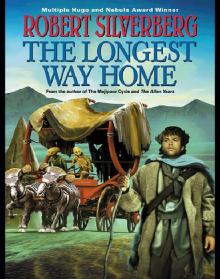 The Longest Way Home
The Longest Way Home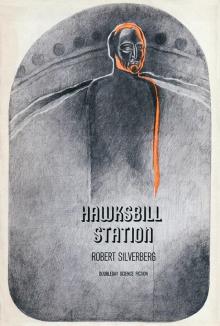 Hawksbill Station
Hawksbill Station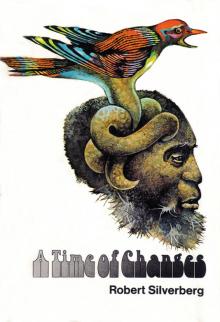 A Time of Changes
A Time of Changes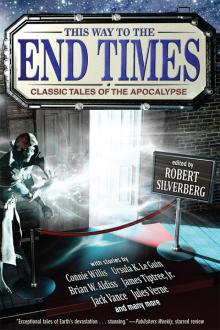 This Way to the End Times: Classic Tales of the Apocalypse
This Way to the End Times: Classic Tales of the Apocalypse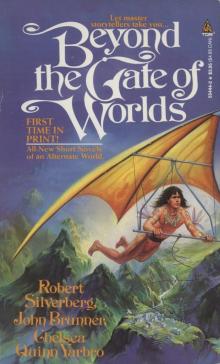 Beyond the Gate of Worlds
Beyond the Gate of Worlds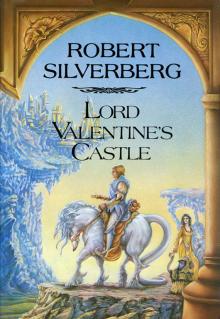 Lord Valentine's Castle
Lord Valentine's Castle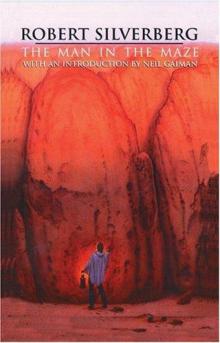 The Man in the Maze
The Man in the Maze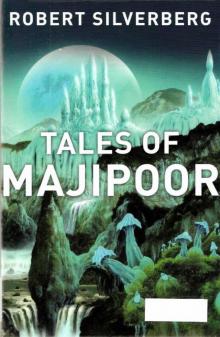 Tales of Majipoor
Tales of Majipoor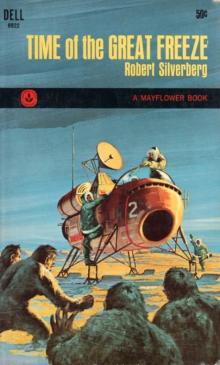 Time of the Great Freeze
Time of the Great Freeze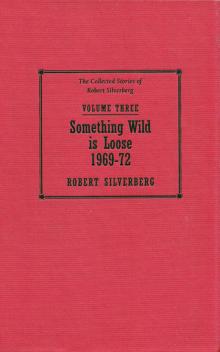 The Collected Stories of Robert Silverberg, Volume 3: Something Wild Is Loose: 1969-72
The Collected Stories of Robert Silverberg, Volume 3: Something Wild Is Loose: 1969-72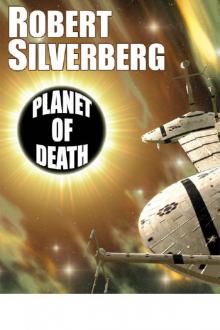 Planet of Death
Planet of Death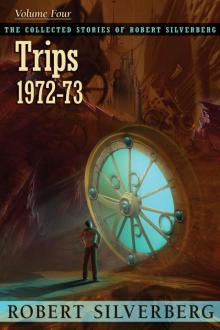 Trips: The Collected Stories of Robert Silverberg, Volume Four
Trips: The Collected Stories of Robert Silverberg, Volume Four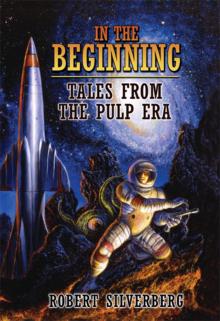 In the Beginning: Tales From the Pulp Era
In the Beginning: Tales From the Pulp Era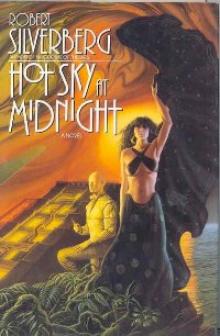 Hot Sky at Midnight
Hot Sky at Midnight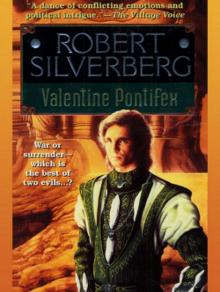 Valentine Pontifex
Valentine Pontifex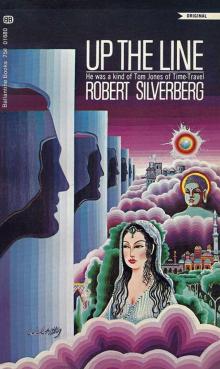 Up the Line
Up the Line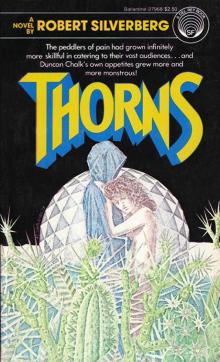 Thorns
Thorns Amanda and the Alien
Amanda and the Alien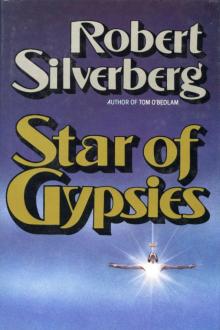 Star of Gypsies
Star of Gypsies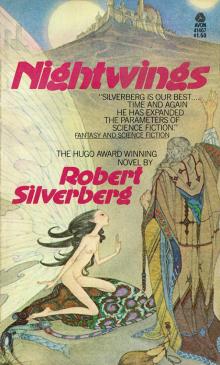 Nightwings
Nightwings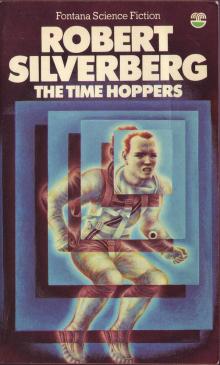 The Time Hoppers
The Time Hoppers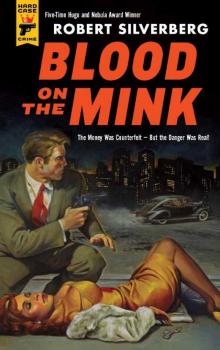 Blood on the Mink
Blood on the Mink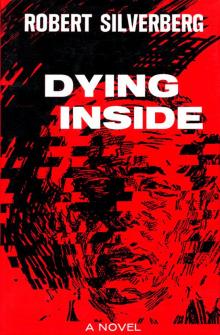 Dying Inside
Dying Inside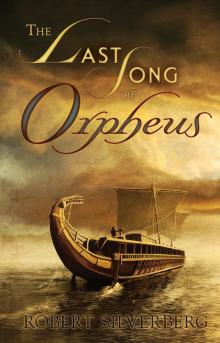 The Last Song of Orpheus
The Last Song of Orpheus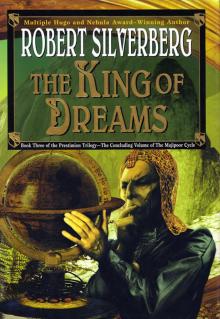 The King of Dreams
The King of Dreams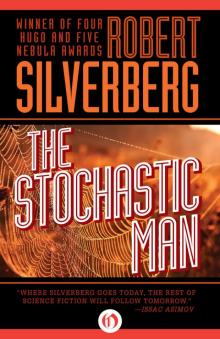 The Stochastic Man
The Stochastic Man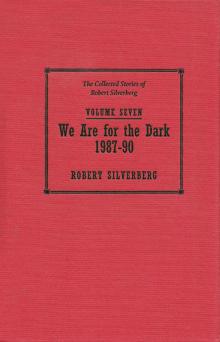 The Collected Stories of Robert Silverberg, Volume Seven: We Are for the Dark
The Collected Stories of Robert Silverberg, Volume Seven: We Are for the Dark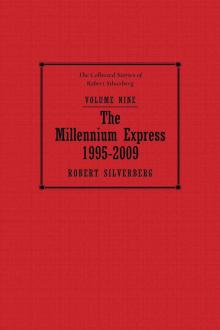 The Millennium Express: The Collected Stories of Robert Silverberg, Volume Nine
The Millennium Express: The Collected Stories of Robert Silverberg, Volume Nine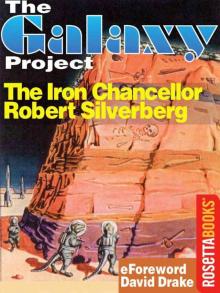 The Iron Chancellor
The Iron Chancellor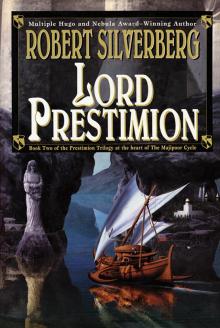 Lord Prestimion
Lord Prestimion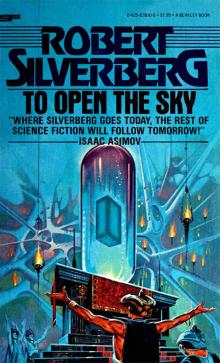 To Open the Sky
To Open the Sky The World Inside
The World Inside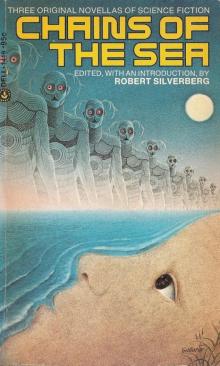 Chains of the Sea
Chains of the Sea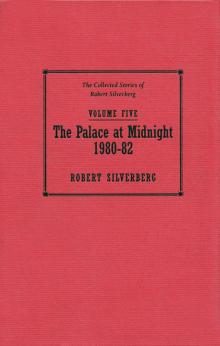 The Collected Stories of Robert Silverberg, Volume Five: The Palace at Midnight
The Collected Stories of Robert Silverberg, Volume Five: The Palace at Midnight Postmark Ganymede
Postmark Ganymede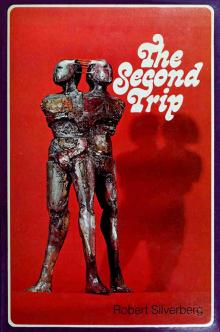 The Second Trip
The Second Trip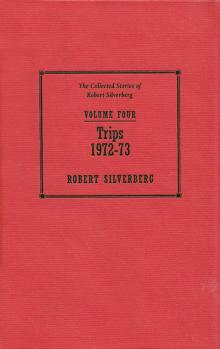 The Collected Stories of Robert Silverberg, Volume 4: Trips: 1972-73
The Collected Stories of Robert Silverberg, Volume 4: Trips: 1972-73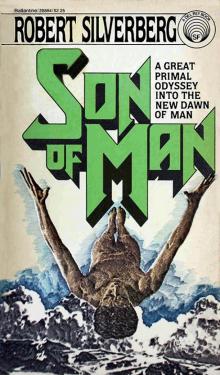 Son of Man
Son of Man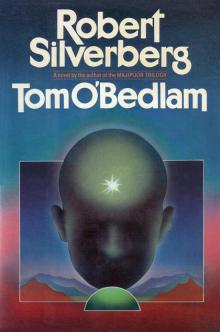 Tom O'Bedlam
Tom O'Bedlam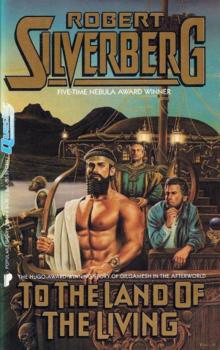 To the Land of the Living
To the Land of the Living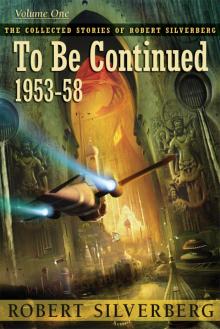 To Be Continued: The Collected Stories of Robert Silverberg, Volume One
To Be Continued: The Collected Stories of Robert Silverberg, Volume One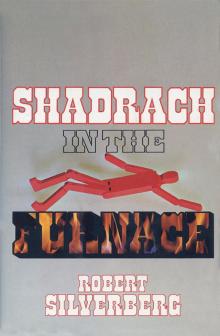 Shadrach in the Furnace
Shadrach in the Furnace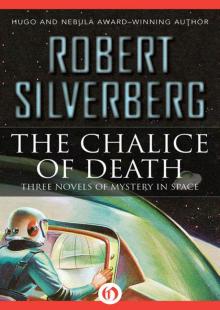 The Chalice of Death: Three Novels of Mystery in Space
The Chalice of Death: Three Novels of Mystery in Space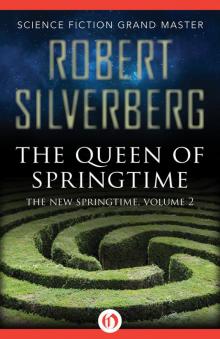 The Queen of Springtime
The Queen of Springtime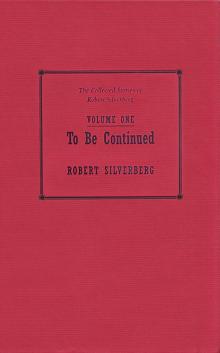 To Be Continued 1953-1958
To Be Continued 1953-1958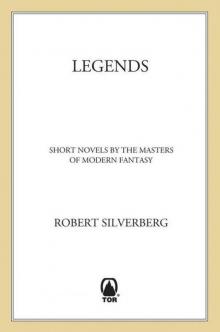 Legends
Legends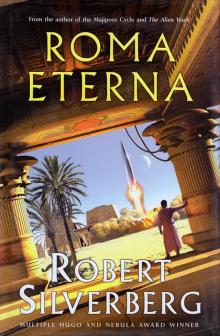 Roma Eterna
Roma Eterna To Live Again
To Live Again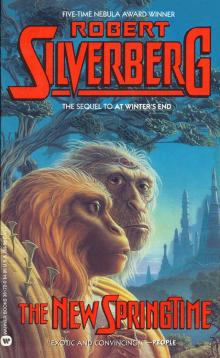 At Winter's End
At Winter's End Needle in a Timestack
Needle in a Timestack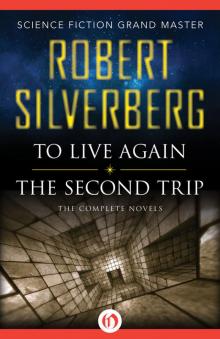 To Live Again and the Second Trip: The Complete Novels
To Live Again and the Second Trip: The Complete Novels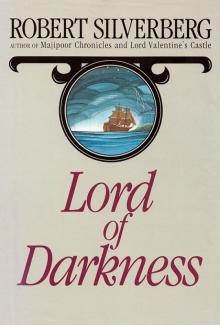 Lord of Darkness
Lord of Darkness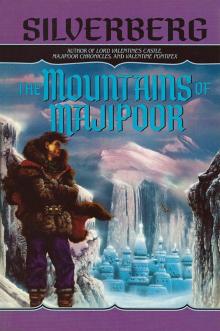 The Mountains of Majipoor
The Mountains of Majipoor The World Outside
The World Outside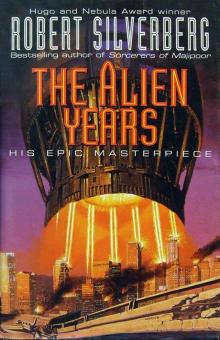 The Alien Years
The Alien Years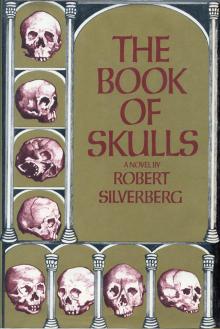 The Book of Skulls
The Book of Skulls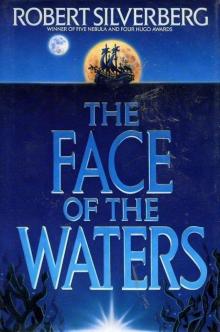 The Face of the Waters
The Face of the Waters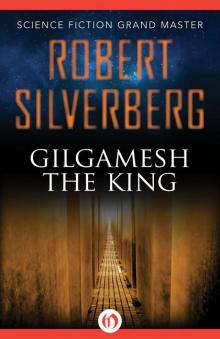 Gilgamesh the King
Gilgamesh the King The Collected Stories of Robert Silverberg, Volume 6: Multiples: 1983-87
The Collected Stories of Robert Silverberg, Volume 6: Multiples: 1983-87 The Happy Unfortunate
The Happy Unfortunate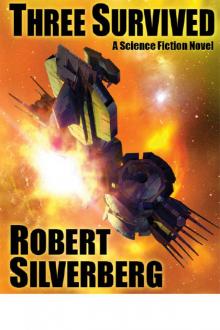 Three Survived
Three Survived Cronos
Cronos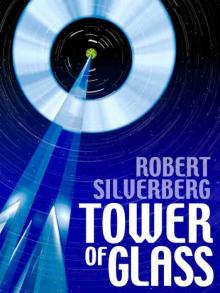 Tower of Glass
Tower of Glass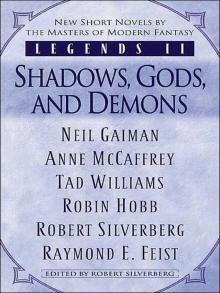 Legends II
Legends II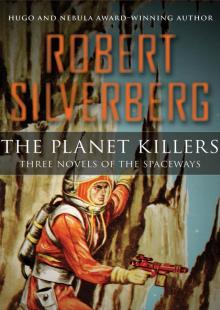 The Planet Killers
The Planet Killers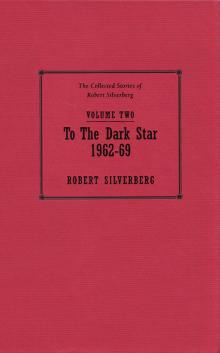 The Collected Stories of Robert Silverberg, Volume 2: To the Dark Star: 1962-69
The Collected Stories of Robert Silverberg, Volume 2: To the Dark Star: 1962-69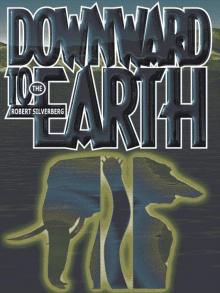 Downward to the Earth
Downward to the Earth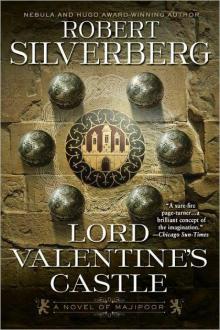 Lord Valentine's Castle: Book One of the Majipoor Cycle
Lord Valentine's Castle: Book One of the Majipoor Cycle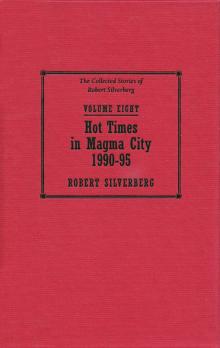 Hot Times in Magma City, 1990-95
Hot Times in Magma City, 1990-95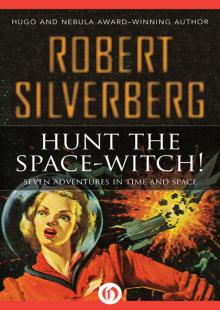 Hunt the Space-Witch! Seven Adventures in Time and Space
Hunt the Space-Witch! Seven Adventures in Time and Space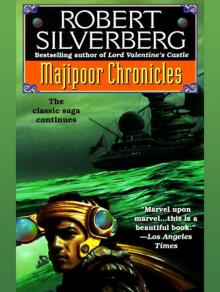 Majipoor Chronicles
Majipoor Chronicles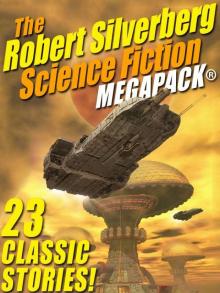 The Robert Silverberg Science Fiction Megapack(r)
The Robert Silverberg Science Fiction Megapack(r)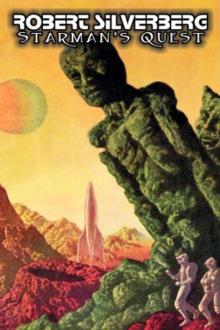 Starman's Quest
Starman's Quest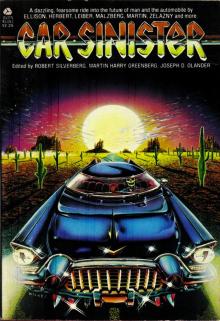 Car Sinister
Car Sinister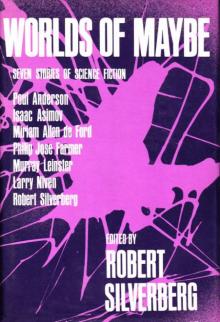 Worlds of Maybe
Worlds of Maybe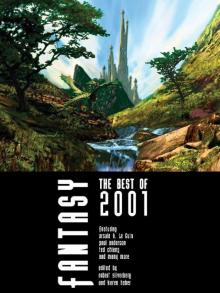 Fantasy The Best of 2001
Fantasy The Best of 2001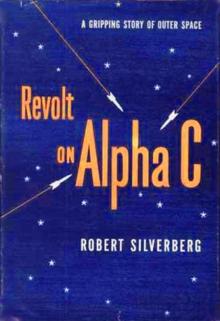 Revolt on Alpha C
Revolt on Alpha C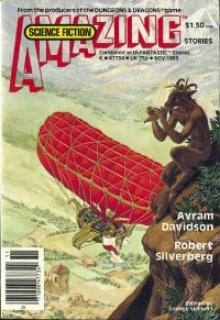 Homefaring
Homefaring The Pardoner's Tale
The Pardoner's Tale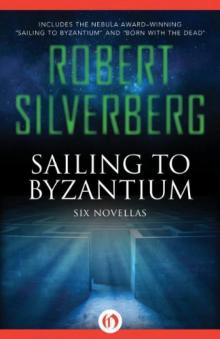 Sailing to Byzantium - Six Novellas
Sailing to Byzantium - Six Novellas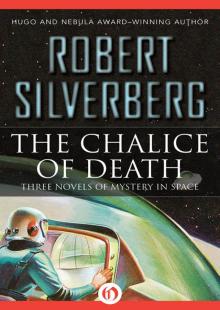 The Chalice of Death
The Chalice of Death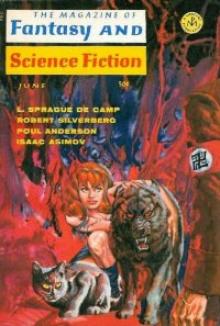 Sundance
Sundance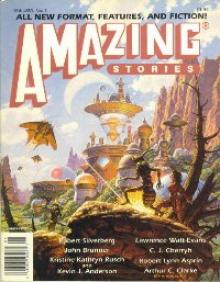 A Tip on a Turtle
A Tip on a Turtle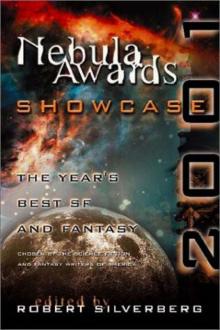 Nebula Awards Showcase 2001: The Year's Best SF and Fantasy Chosen by the Science Fiction and Fantasy Writers of America
Nebula Awards Showcase 2001: The Year's Best SF and Fantasy Chosen by the Science Fiction and Fantasy Writers of America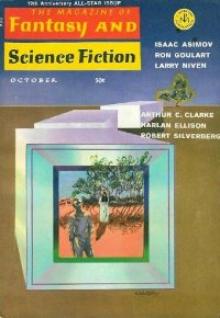 The Fangs of the Trees
The Fangs of the Trees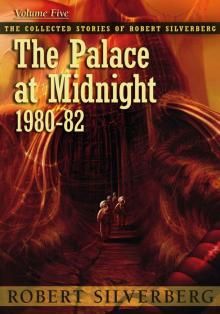 The Palace at Midnight: The Collected Work of Robert Silverberg, Volume Five
The Palace at Midnight: The Collected Work of Robert Silverberg, Volume Five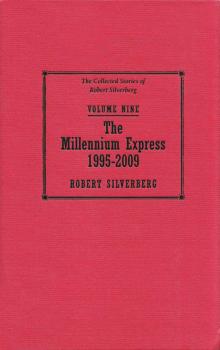 The Millennium Express - 1995-2009 - The Collected Stories of Robert Silverberg Volume Nine
The Millennium Express - 1995-2009 - The Collected Stories of Robert Silverberg Volume Nine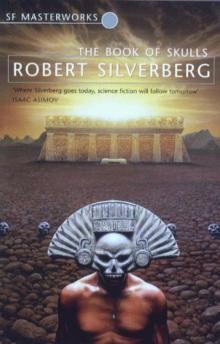 Book of Skulls
Book of Skulls Passengers
Passengers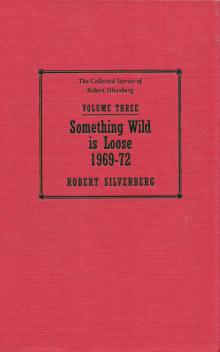 Something Wild is Loose - 1969–72 - The Collected Stories of Robert Silverberg Volume Three
Something Wild is Loose - 1969–72 - The Collected Stories of Robert Silverberg Volume Three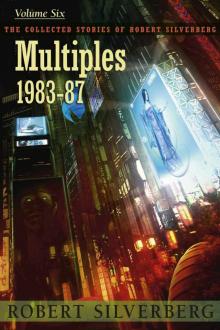 Multiples
Multiples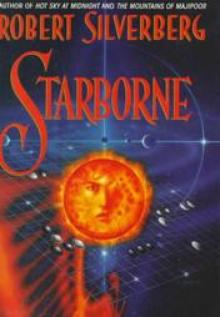 Starborne
Starborne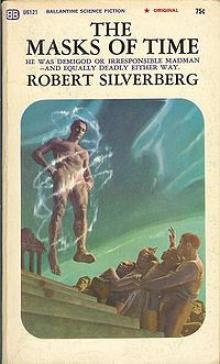 The Masks of Time
The Masks of Time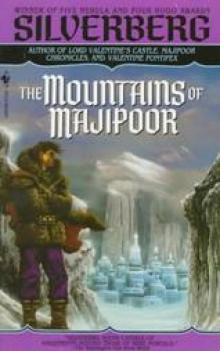 The Mountains of Majipoor m-8
The Mountains of Majipoor m-8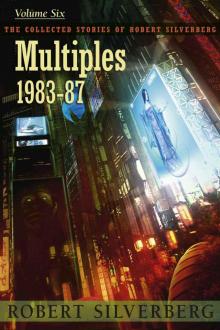 Multiples (1983-87)
Multiples (1983-87) Those Who Watch
Those Who Watch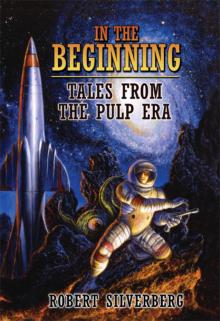 In the Beginning
In the Beginning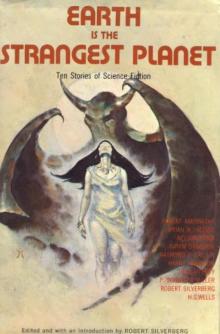 Earth Is The Strangest Planet
Earth Is The Strangest Planet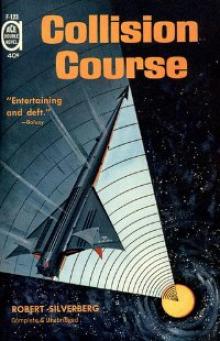 Collision Course
Collision Course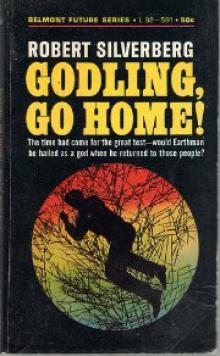 Neutral Planet
Neutral Planet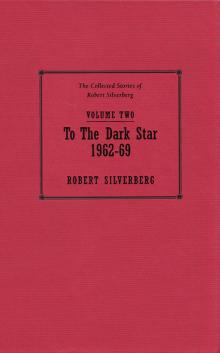 To the Dark Star - 1962–69 - The Collected Stories of Robert Silverberg Volume Two
To the Dark Star - 1962–69 - The Collected Stories of Robert Silverberg Volume Two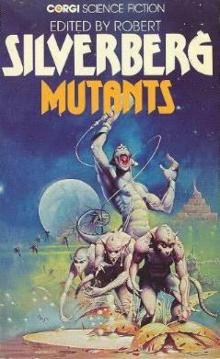 Mutants
Mutants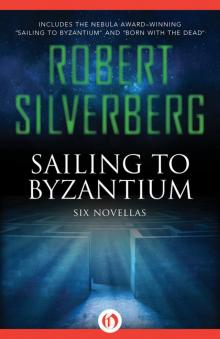 Sailing to Byzantium
Sailing to Byzantium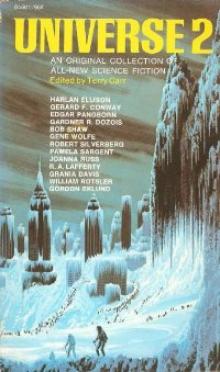 When We Went to See the End of the World
When We Went to See the End of the World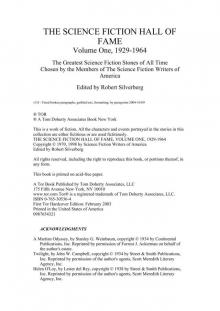 Robert Silverberg The Science Fiction Hall Of Fame Volume One, 1929-1964
Robert Silverberg The Science Fiction Hall Of Fame Volume One, 1929-1964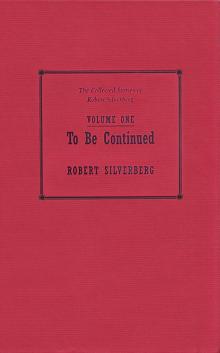 To Be Continued - 1953–58 - The Collected Stories of Robert Silverberg Volume One
To Be Continued - 1953–58 - The Collected Stories of Robert Silverberg Volume One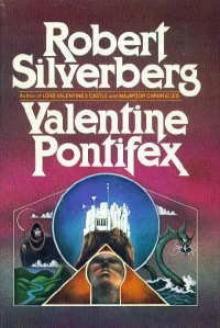 Valentine Pontifex m-3
Valentine Pontifex m-3 Gianni
Gianni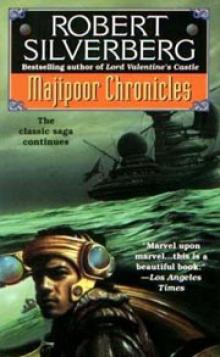 Majipoor Chronicles m-2
Majipoor Chronicles m-2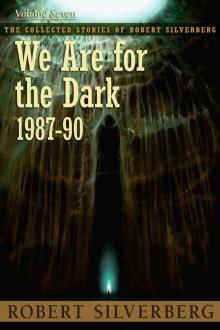 We Are for the Dark (1987-90)
We Are for the Dark (1987-90)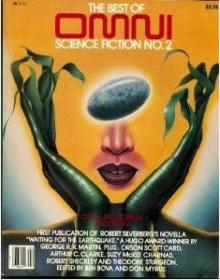 Waiting for the Earthquake
Waiting for the Earthquake Fantasy: The Best of 2001
Fantasy: The Best of 2001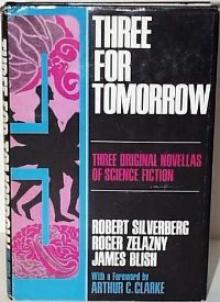 How It Was When the Past Went Away
How It Was When the Past Went Away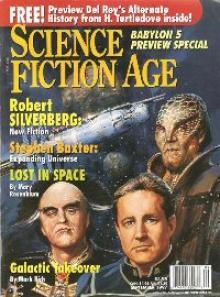 Beauty in the Night
Beauty in the Night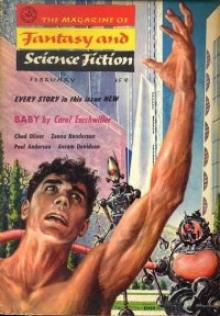 The Man Who Never Forgot
The Man Who Never Forgot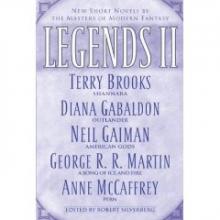 The Book of Changes m-9
The Book of Changes m-9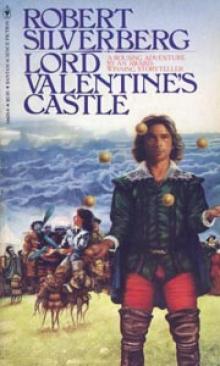 Lord Valentine's Castle m-1
Lord Valentine's Castle m-1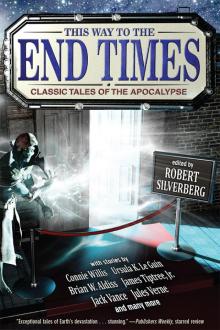 This Way to the End Times
This Way to the End Times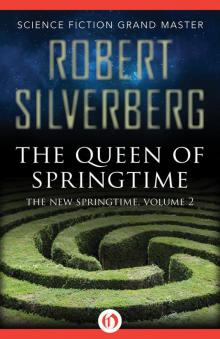 Queen of Springtime
Queen of Springtime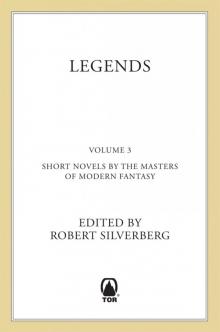 Legends-Volume 3 Stories by the Masters of Modern Fantasy
Legends-Volume 3 Stories by the Masters of Modern Fantasy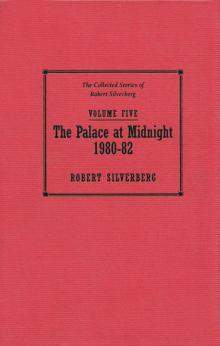 The Palace at Midnight - 1980–82 - The Collected Stories of Robert Silverberg Volume Five
The Palace at Midnight - 1980–82 - The Collected Stories of Robert Silverberg Volume Five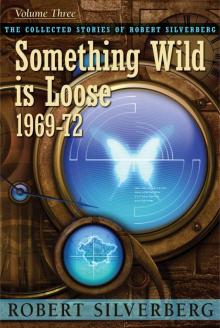 Something Wild is Loose: The Collected Stories of Robert Silverberg, Volume Three
Something Wild is Loose: The Collected Stories of Robert Silverberg, Volume Three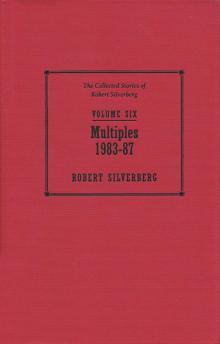 Multiples - 1983–87 - The Collected Stories of Robert Silverberg Volume Six
Multiples - 1983–87 - The Collected Stories of Robert Silverberg Volume Six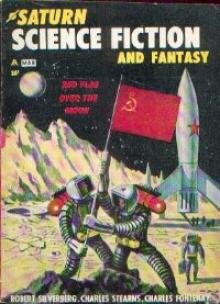 Alaree
Alaree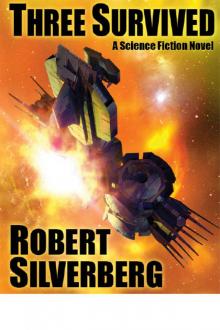 Three Survived: A Science Fiction Novel
Three Survived: A Science Fiction Novel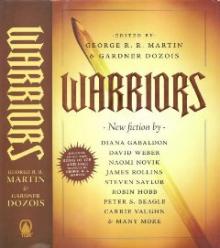 Defenders of the Frontier
Defenders of the Frontier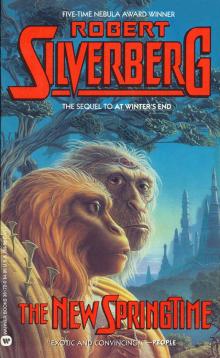 The New Springtime
The New Springtime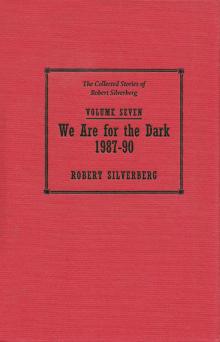 We Are for the Dark - 1987–90 - The Collected Stories of Robert Silverberg Volume Seven
We Are for the Dark - 1987–90 - The Collected Stories of Robert Silverberg Volume Seven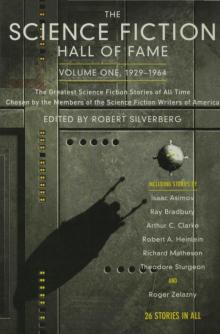 The Science Fiction Hall of Fame, Volume One 1929-1964--The Greatest Science Fiction Stories of All Time Chosen by the Members of the Science Fiction Writers of America
The Science Fiction Hall of Fame, Volume One 1929-1964--The Greatest Science Fiction Stories of All Time Chosen by the Members of the Science Fiction Writers of America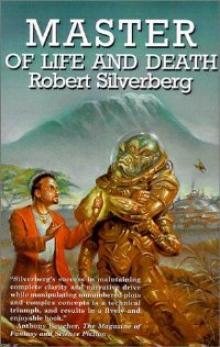 Master Of Life And Death
Master Of Life And Death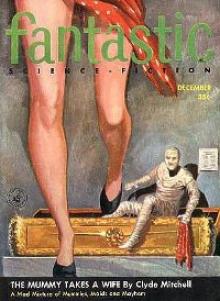 Choke Chain
Choke Chain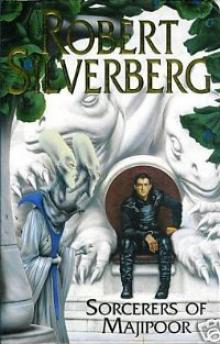 Sorcerers of Majipoor m-4
Sorcerers of Majipoor m-4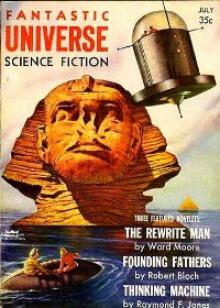 Absolutely Inflexible
Absolutely Inflexible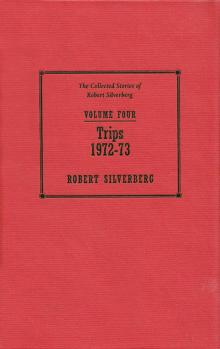 Trips - 1962–73 - The Collected Stories of Robert Silverberg Volume Four
Trips - 1962–73 - The Collected Stories of Robert Silverberg Volume Four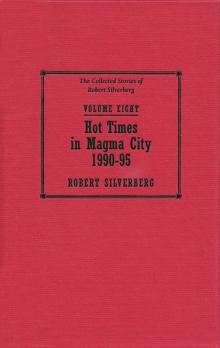 Hot Times in Magma City - 1990-95 - The Collected Stories of Robert Silverberg Volume Eight
Hot Times in Magma City - 1990-95 - The Collected Stories of Robert Silverberg Volume Eight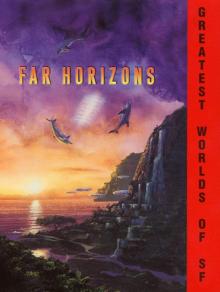 Far Horizons
Far Horizons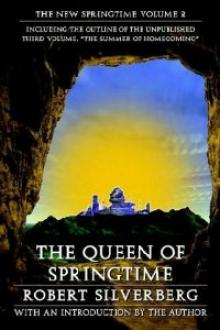 The Queen of Springtime ns-2
The Queen of Springtime ns-2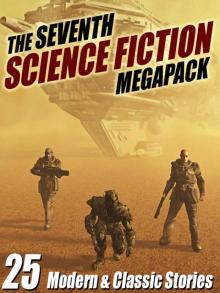 The Seventh Science Fiction Megapack
The Seventh Science Fiction Megapack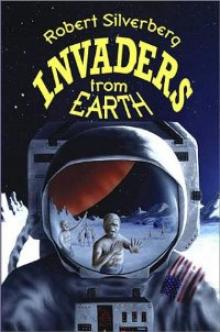 Invaders From Earth
Invaders From Earth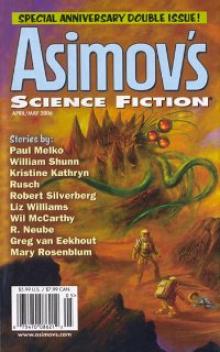 Hanosz Prime Goes To Old Earth
Hanosz Prime Goes To Old Earth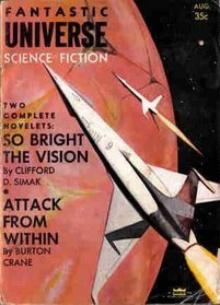 The Macauley Circuit
The Macauley Circuit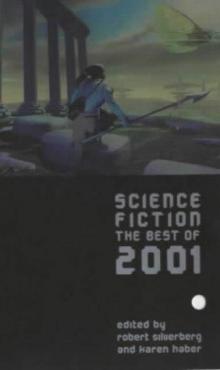 Science Fiction: The Best of 2001
Science Fiction: The Best of 2001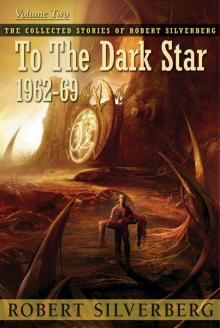 To the Dark Star: The Collected Stories of Robert Silverberg, Volume Two
To the Dark Star: The Collected Stories of Robert Silverberg, Volume Two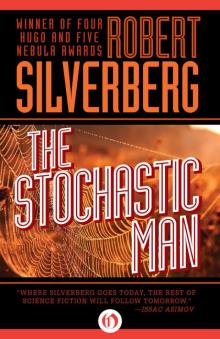 Stochastic Man
Stochastic Man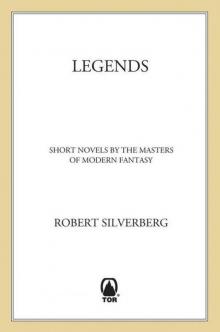 Legends: Stories By The Masters of Modern Fantasy
Legends: Stories By The Masters of Modern Fantasy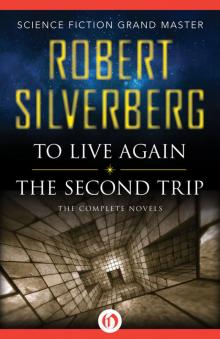 To Live Again And The Second Trip
To Live Again And The Second Trip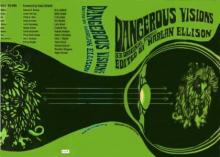 Flies
Flies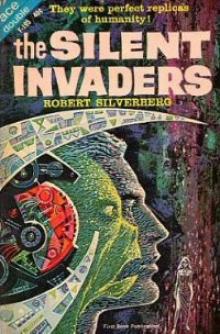 The Silent Invaders
The Silent Invaders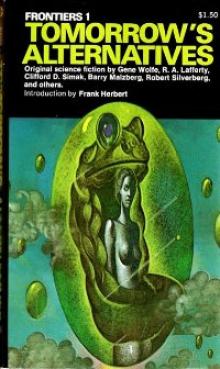 Ship-Sister, Star-Sister
Ship-Sister, Star-Sister